Taking an environmentally sensitive approach to pest management
Catfacing Injury on Apples and Peaches
Published: May 29, 2018
Several types of insets with piercing-sucking mouthparts cause catfacing injury on peaches and apples, including tarnished plant bugs and many types of stink bugs. The term "catfacing" describes the distorted fruit shape, resembling the puckered cheeks of a cat. Early-season feeding damage from these insects appears as sunken corky areas free of fuzz on the surface of the peach fruit (Figure 1). On apples, catfacing symptoms are discolored depressions on the fruit surface (Figure 2) and irregular necrotic spots about 2 to 3 mm-wide in the flesh (Figure 3). As apples and peaches enlarge, fruit shape becomes severely distorted with deep sunken areas (Figure 4).
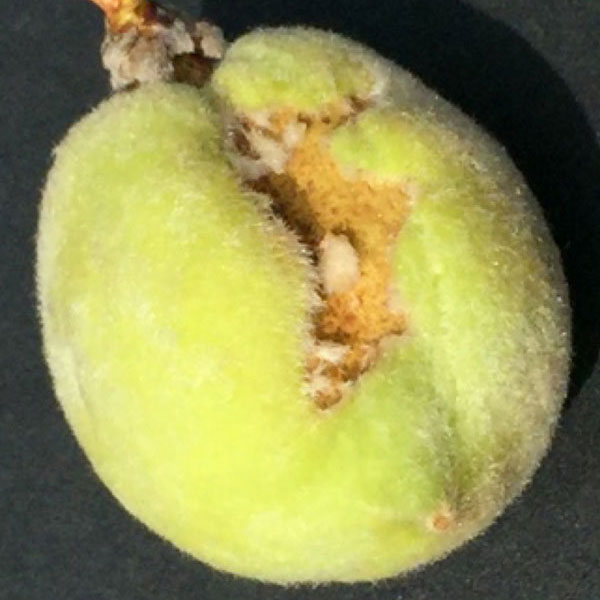
Figure 1 Early-season catfacing injury on the surface of a developing peach with sunken tissue devoid of fuzz. Â Photo credit: Bruce Barrett
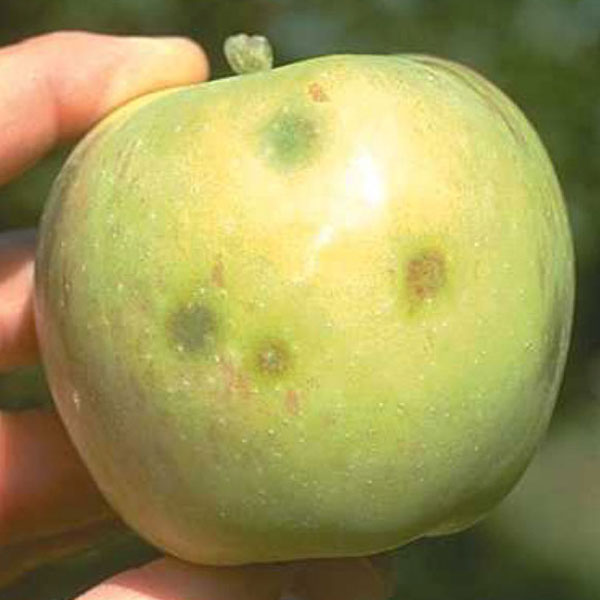
Figure 2 Sunken depressions on the surface of an apple from stink bug feeding. Photo credit: Bruce Barrett
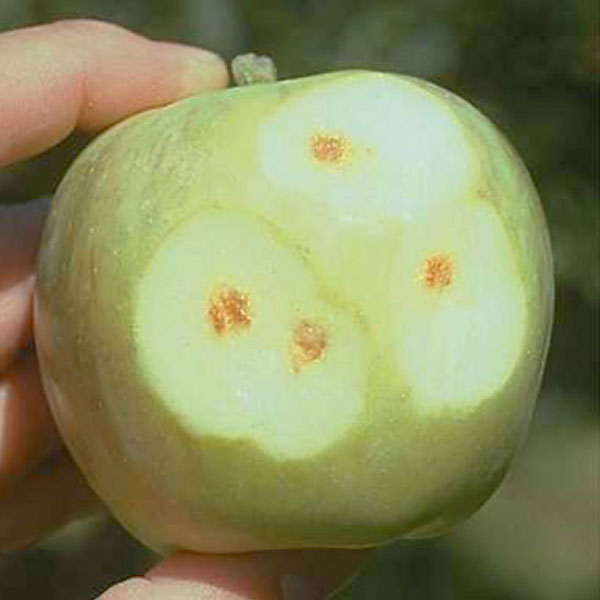
Figure 3 Damaged cells in apple flesh underneath sunken depressions on skin caused by stink bug feeding. Photo credit: Bruce Barrett
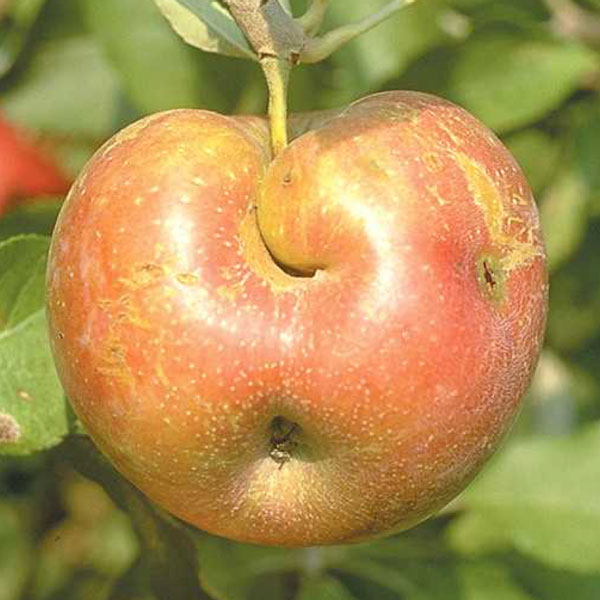
Figure 4 Catfacing damage on apple caused by early-season tarnished plant bug feeding. Photo credit: Bruce Barrett
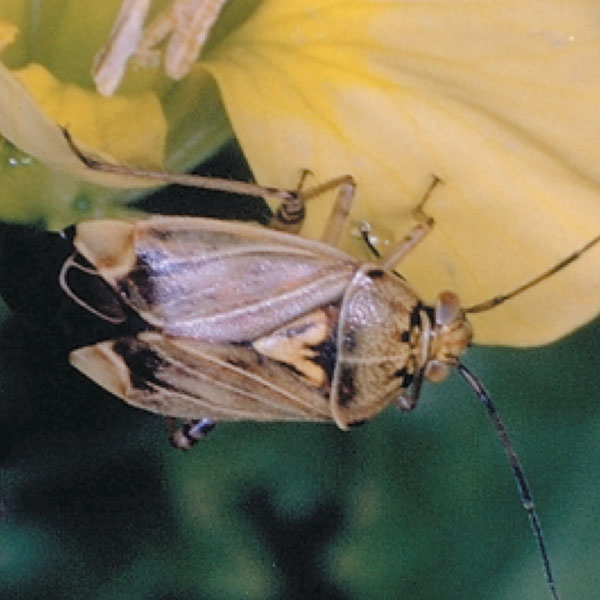
Figure 5 Adult tarnished plant bug with mottled wings and yellow triangle in the middle of its back. Photo credit: Lee Jenkins
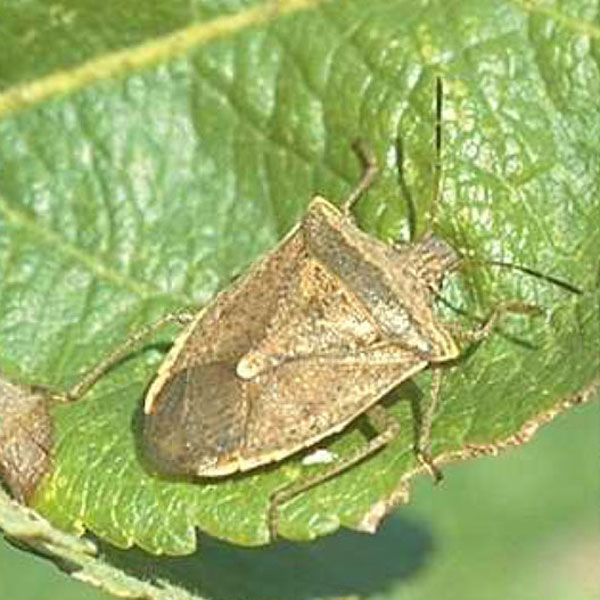
Figure 6 A brown, shield-shaped adult stink bug on apple foliage. Photo credit: Bruce Barrett.
Tarnished plant bugs (Lygus lineolaris) feed on a wide variety of crops, weeds, and ornamental plants (Figure 5). This insect feeds on developing flower buds, fruit, and seeds. Adults are about ¼ inch-long with mottled brown wings folded over the abdomen and a yellow-tipped triangle occurs in the middle of their back. Adults feed on young peach tissue, causing blossom drop and early-season fruit drop
More than 45 species of stink bugs occur in North America in the genera Acrosternum, Euschistus, Nezara, Halyomorpha, and Thyanta. The southern green stink bug (Nezara virdula) andthe green stink bug (Acrosternum hilare) are common plant bugs in the Midwest. Adults are bright green with an elongated, shield-shaped body about ½ inch-long. Adult Euschistus stink bugs (Figure 6), as well as the brown marmorated stink bugs (Halyomorpha halys) are brown-colored with shield-shaped bodies. All stink bugs release a strong, foul odor from glands between the legs when disturbed.
Unlike most stink bugs that have been here for many years, the brown marmorated stink bug (BMSB) was first introduced into the U.S. in 1998 and by 2011 became a significant pest in eastern orchards. By 2013, BMSB was found in Missouri. Adult BMSB are distinguished from other species by their 5/8 inch-long, marbled brown body, with white triangles along the margin of the abdomen and brown and white bands on the last two antennal segments. In addition to feeding on many types of outdoor plants during the growing season, BMSB seek sheltered indoor sites where they congregate for overwintering.
Plant and stink bugs are difficult to control in orchards because they fly in and out of orchards quickly. However, since they are attracted to blooming plants, these pests can be managed by maintaining a vegetation-free area underneath fruit trees. Also, reducing or eliminating flowering weeds in tree row-middles or in the surrounding ground cover will limit these insects. Avoid mowing during bloom to limit insect flight to flowers of orchard trees.
An insecticide application at the pink stage of flowering for peaches and apples will reduce the population of plant and stink bugs feeding in orchards in early spring. Since these insects have multiple generations per year, additional pesticide applications are usually applied. Pyrethroid products, such as Asana, Danitol, Mustang Maxx, and Warrior provide control against these insects. Other products, including Actara and Assail are somewhat less effective against these pests, but should be alternated with pyrethroid type products to prevent insecticide-resistant biotypes. For a full listing of labeled insecticides with application rates see: https://ag.purdue.edu/hla/Hort/Documents/ID-465.pdf.
Subscribe to receive similar articles sent directly to your inbox!
- The Peento Peach: More Than A Curiosity (08/13/20)
- Gummosis on Peach Fruit (08/30/18)
- Catfacing Injury on Apples and Peaches (05/29/18)
REVISED: February 21, 2017